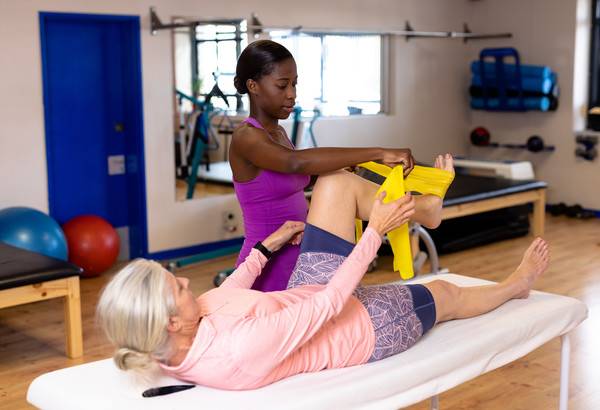Is Manual Therapy the Same As Massage Therapy?
Manual therapy (MT) refers to a range of techniques used by physical therapists, chiropractors and osteopaths for manual rehabilitation. These can include joint mobilization, soft tissue manipulation, myofascial release and strain-counterstrain movements.
A Physical Therapist (PT) can use these techniques to reduce muscle tension and pain, enhance movement quality and extend a patient’s range of motion. However, not all medical conditions respond well to this type of therapy.
What is Manual Therapy?
Manual therapy is a type of physical therapy that utilizes the therapist’s hands instead of machines or tools. It has proven to be an effective technique for relieving pain, increasing mobility, decreasing swelling and inflammation, improving flexibility, as well as aiding you in reaching other objectives.
Therapists apply pressure to muscle tissue and joints with their hands, using skilled, specific techniques designed to relieve pain, increase circulation, and decrease tension in soft tissues. Depending on the area being treated, the therapist may also utilize joint mobilization or manipulation in order to enhance joint mechanics and range of motion.
Manual therapy has proven beneficial for a range of conditions, including back pain, referred pain and musculoskeletal issues. However, it’s important to remember that manual therapy may not be suitable for everyone – it’s best to discuss your condition with your therapist who can decide if manual therapy is the right approach for you.
Mobilization or Manipulation
Manual therapy is an umbrella term for a range of skilled, hands-on techniques used to assess, diagnose and treat muscle or joint conditions. It may be an invaluable adjunct treatment to other management options when it comes to increasing range of motion and relieving pain.
Manipulating and mobilizing are two common manual therapies that can help free up restricted spinal segments or joints of the extremities, relieving pain and restoring function. These treatments reduce stiffness, increase mobility, and enable you to return to an active lifestyle.
Manipulating an articulation requires the expert application of rapid rotational, sheer or distraction forces to its joint segment. On the other hand, mobilization involves slower-speed controlled movements of that same joint segment.
Traction
Manual therapy uses traction as a treatment to stretch the spine and take pressure off compressed discs. This can be beneficial when treating herniated discs, sciatica, and degenerative disc disease.
Traction can also help alleviate pain from pinched nerves and lumbar strains and spasms. A physical therapist can apply this traction force with their hands or by using mechanical units.
However, not all forms of traction provide the same results. Some techniques promote tissue degradation while others aid in disc or joint repair.
At Fluid Health & Fitness, we use both manual and mechanical traction to give patients the best spinal correction available.
Mechanical traction is an alternative to manual traction and may be more suitable for chiropractors who are short on time or working with complex cases. Furthermore, this allows them to focus on one area while decompressing.
Myofascial Release
Myofascial release (MFR) is a type of manual therapy that targets stretching and loosening tightness in the fascia, which encases muscles throughout the body. It’s often used to relieve muscular tension or stress-related aches and pains.
Myofascial therapy is a safe and effective treatment that can improve mobility, reduce pain and help the body heal after an injury. It’s especially helpful for those suffering from chronic or persistent discomfort such as fibromyalgia.
This technique utilizes hands-on stretching and massage to release pressure in the fibrous bands of connective tissue that surround muscles, bones, and nerves throughout the body. Although it can be slow and painful at first, eventually leading to increased flexibility, reduced pain, and improved movement.
Therapists specializing in telehealth physical therapy treatment options and corrective exercise solutions can tailor their marketing materials to target those with specific health concerns, helping them build a larger client list and receive referrals from physicians, surgeons, rehab centers, fitness facilities and physical therapy clinics.
If you’re interested in learning more about manual therapy and how it can benefit you, contact Fluid Health & Fitness to schedule an appointment with our team of specialists.



